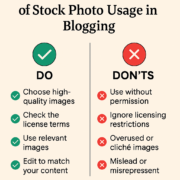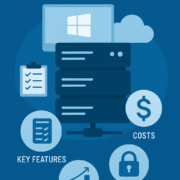How to Track Google Rankings and monitor Google search results with API
Have you ever wondered how to keep tabs on your monitor Google search results with API? As an online company owner or content creator, closely monitoring your search engine optimization (SEO) rankings is crucial. After all, the higher your rankings, the more visibility you gain in front of your target audience. The good news is that an API lets you easily track your Google rankings and monitor search results to see how your SEO efforts are paying off.
You want to monitor Google search results with API and see how people find you organically, huh? The good news is that there is an API for that. Google Search Console API lets you monitor your search rankings and traffic over time.
How the API Works
The API provides data through an interface, allowing you to pull reports on how your site ranks for different keywords, how much traffic those rankings drive, and more. You send requests to the API, which returns the data in a machine-readable format.
To use the API, you must verify your website in Google Search Console. Once verified, you can enable the API and generate API credentials to access your data. Many third-party tools integrate with the API to provide an easy way to visualize and monitor your rankings.
What You Can Track
With the Search Console API, you gain insights into how Google views and indexes your site. You can track:
- Keyword rankings: See your site’s ranking for target keywords and phrases over time. Know when you move up or down in the results.
- Clicks and impressions: Find out how often your site appeared in search results (images) and how often people clicked (clicks). Measure the click-through rate.
- Traffic: Track how much organic search traffic is coming to your site from Google. See traffic trends and find your top-performing keywords.
- Indexed pages: Check how many of your pages Google has indexed and see your site’s crawl stats. Make sure Google can find all your essential content.
- rich snippets: Confirm if Google is showing structured data markup on your site, such as ratings, reviews, events, and more.
- Mobile-friendliness: See if Google considers your site mobile-friendly and why it doesn’t. Make sure you have a responsive design.
With the power of the Search Console API, you have the insights to optimize your site and content for the best possible search rankings and traffic. The data is there” you just have to make use of it!
How Google SERP APIs Work to Track Rankings
Google Search Engine Results Pages (SERPs) APIs allow you to track your website rankings for target keywords in Google search results.
How They Work
Google SERP APIs use advanced web scraping technology to query Google’s search engine for specific keywords or phrases and return the search results. The API parses the results to extract critical data like:
- Your website ranking position for the search
- The page title, snippet, and URL of the top 10 ranking results
- Estimated search traffic and keyword difficulty metrics
Tracking these metrics over time with scheduled API calls gives you valuable insights into how your rankings change and can optimize your website content accordingly.
Say you run an e-commerce site selling hiking gear and want to improve your rankings for the search term waterproof hiking boots. You set up the API to check your orders for that keyword once a week. Over the first month, you notice your site rankings climbing from position 12 up to position 8. Great progress! But then the orders stall for a couple of weeks.
Looking at the API data, a competitor site has recently revamped its content for that keyword, now ranking at position 3. Their page title, snippet, and page content focus on the features and benefits of their latest high-tech waterproof boots. Aha, now you have an action plan.
Time to freshen up your content, and product pages. To quickly and efficiently do so, you can utilize a paraphrase tool. It will give your content a completely new look within seconds without compromising on original meaning and quality. This way you can either match or beat your competitor and continue your upward momentum!
Step-by-Step Guide to Monitoring Google Rankings with Scrape-It’s API
Once you have your API key from Scrape-It, you can start tracking your Google search rankings. Their API makes it simple to monitor your site’s rank for target keywords and see how your orders change over time.
-
Set up keyword rankings monitoring.
First, determine which keywords or search terms to track rankings for. These should be terms that are relevant to your site and that you are actively trying to rank for.
Next, you request the API to add those keywords to your monitoring list. You pass your API key, the search terms, and the location/country code you want to check rankings for. The API will start tracking your orders for those terms and locations.
-
Check your current rankings.
Request the rankings endpoint to see your current rankings for a set of keywords. You pass your API key, a comma-separated list of keyword IDs to check (which you got as a response when adding keywords), and the location code.
The API will return your current rankings for each keyword in the locations specified. It will tell you the search term, your ranking position, the URL of the page ranking in that position, and more. That lets you quickly check how you currently rank for essential search terms.
-
Monitor rankings over time.
The true power of the API is that it allows you to monitor how your rankings change over days, weeks, and months. You can set up automated requests to check rankings for your keywords on a schedule. Then, you can see if your rankings are improving, dropping, or staying stable over time.
This data is invaluable for evaluating the success of your SEO and content strategies. You know your efforts are paying off if you see rankings increasing for target keywords. If rankings drop, you can make adjustments to optimize your content and links further.
The Scrape-It Google SERP API makes tracking and monitoring your search rankings simple. With just a few API calls, you have insight into how you rank for critical keywords and how your rankings change over the long run. This data can help shape your SEO and content strategies to improve your search traffic and rankings.
Conclusion
So there you have it, a step-by-step guide to monitor Google search results with API. Stop straining time logging in and out of multiple accounts and checking rankings manually. Set up a scraper to do the work for you and deliver customized reports to your inbox. Know exactly how your site ranks for any keyword and make data-driven decisions to optimize your SEO and content strategy. The best part is, with an API, the possibilities are endless. You can get creative and build custom solutions tailored to your business needs.




